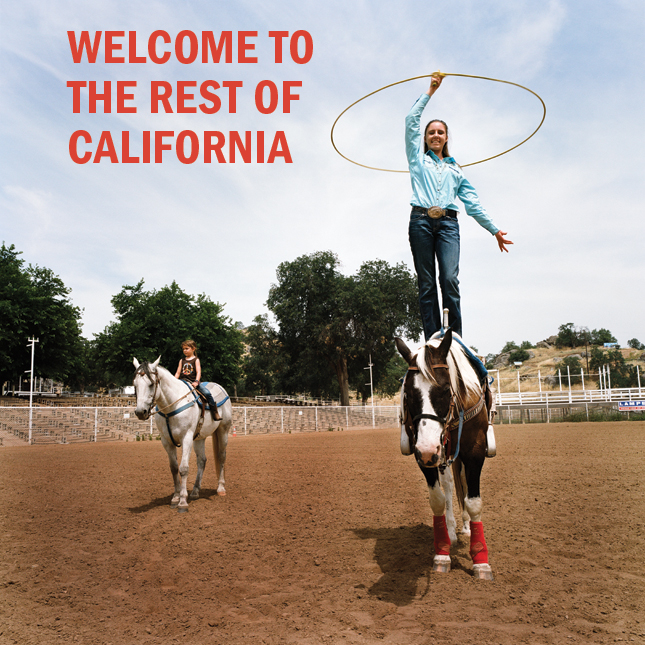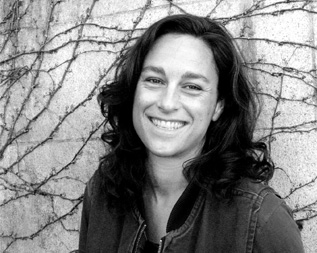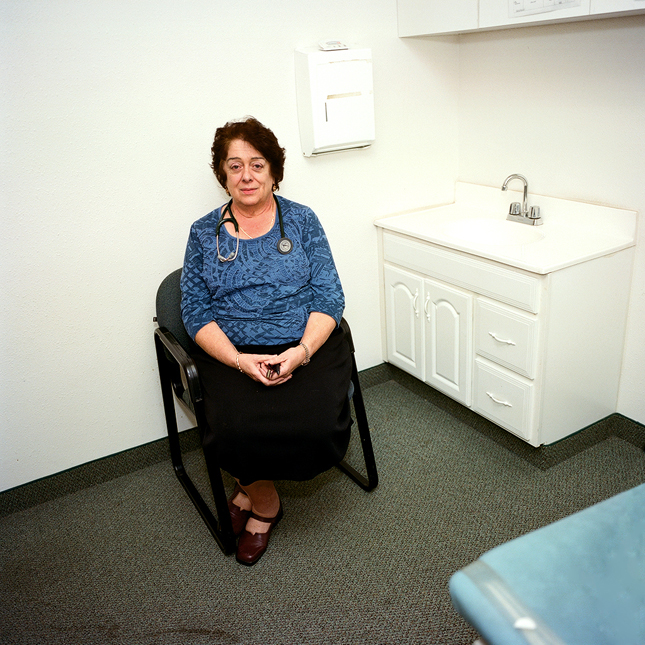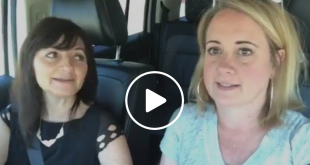 By: Vanessa Richardson
By: Vanessa Richardson
There’s Hollywood and Silicon Valley. There’s Big Sur, Palm Springs, maybe the Redwoods. These are the places most people know or have heard about in California. But have you ever heard of Surprise Valley? Lost Hills? Mecca? These are also in California, the “other” California that most people don’t know about or visit. They perhaps drive past these places, oblivious, on their way from the Bay Area to Southern California.
But rural California is the biggest – and most diverse – part of the state. From Modoc County all the way down to the Coachella Valley are a variety of people who, while living lives far different from “city slickers” on the coast, live remarkable lives indeed, and also share the same hopes, dreams and concerns as their urban counterparts.
Last year, photojournalist Lisa M. Hamilton traveled nearly 10,000 miles around California to visit those places most have never heard of. Along the way she collected scores of stories by pen, digital recorder and camera. The result: Real Rural, a multimedia project showing rural Californians in photos, print and in their own voices.
The multimedia website is where all the Real Rural stories are collected. An ad campaign on BART trains in the Bay Area that features select portraits of the people and places Hamilton visited began in February and is still running now, it may go up again in the fall but it’s not guaranteed. The California Historical Society Museum in San Francisco will also hold a show of Real Rural photographs in November, and there will be a concurrent ad-art campaign on billboards in Los Angeles and Sacramento.
 Hamilton wants to Real Rural to show that the “other” part of California and its people are a vast mosaic, more diverse and dynamic than most of us from elsewhere realize. She spoke with See Jane Do about how Real Rural came about, and what its impact has been.
Hamilton wants to Real Rural to show that the “other” part of California and its people are a vast mosaic, more diverse and dynamic than most of us from elsewhere realize. She spoke with See Jane Do about how Real Rural came about, and what its impact has been.
SJD: What got you started on this project?
Lisa Hamilton: I have written about and photographed agricultural issues for more than a decade. In writing my book Deeply Rooted in 2009, I came away thinking that so many people have left agriculture, or lost their place in it. In order to have more people involved in agriculture, we need to have healthy, strong rural communities. I live in the Bay Area but haven’t written about California for years because there are enough people covering the state’s agricultural issues. But there are very few journalists focusing on rural communities, and even fewer who are speaking specifically to a urban audience. I have spent a lot of time travelling the state and seen more than the average city person but still, I had a lot to learn. Every time I ventured off of I-5 into distinctly rural areas, I met new kinds of people with rich histories and stories. I saw a lot of opportunity here for profiling those great stories.
SJD: What’s your background? Did you grow up with a connection to agriculture or a rural area?
Hamilton: I grew up in the suburbs of Boston, and my formative years were entirely without meaningful contact to any rural life. We would go to Vermont occasionally and see red barns, maybe go apple picking every few years. My mom had a single tomato plant in the yard every summer. But when I was in college and introduced to agriculture as a vocation, I was electrified. Here was this direct connection with the natural world I had never experienced before, and it was so exciting. I think that the years I was growing up, disconnected from the natural world, was the root of why I became interested in agriculture, food and, by extension, rural communities. I’m similar to my generation of young people who are so electrified by the movements around food and farming. After being cut off from plants, animals and nature for our whole lives, discovering a pathway to those things is momentous.
SJD: How did you pick the places to visit and profile?
Hamilton:. I tried for some geographic distribution, going to places where people don’t normally go, but I let myself be guided by the people I encountered. I wanted to go to Modoc County because it’s a relatively undiscovered world. Because it was first and foremost a photo project, the stories had to be good. A lot of the stories I didn’t include because the photos were not up to my standards. If you look at the map, you see a concentration in the southern Central Valley and San Joaquin Valley, in part because I spent a lot more time there, but also it’s the most densely-populated rural area, and the most complicated and misunderstood. Because it’s the rural area people visit most often in the sense of driving up I-5 through there, we think we’ve been there and know who’s there, and what the experience is.
SJD: Some of your stories are about amazing rural women. Tell us what you learned about them.
Hamilton: Linda Hussa, the rancher and poet in Modoc County, is an interesting character because she grew up in Bay Area and then married into John Hussa’s family, who have had the ranch for more than a 100 years. She brought with her an urban upbringing, but she has been there for more than 30 years. She is every bit as much of a rancher as her husband and feels about it as deeply as he does, and yet because she came there as an adult, she is still able to act as an observer. She is not tied to her own single experience, so she becomes a voice for that place. It’s important to her to challenge the simple side and familiar images most people have of that lifestyle. She is associated with cowboy poetry but she is not all about that. She challenges all the easy stories affiliated with it. She.
 From what I’ve seen, there is a strong sense of community and volunteership in rural California, more so than in urban communities, and it’s the women doing the volunteering and community organizing, whether it’s a bake sale or running a nonprofit. Marcia Sablan, a doctor in Firebaugh, has taken that community service role to its highest degree. She’s a warrior for her community and for rural health.
From what I’ve seen, there is a strong sense of community and volunteership in rural California, more so than in urban communities, and it’s the women doing the volunteering and community organizing, whether it’s a bake sale or running a nonprofit. Marcia Sablan, a doctor in Firebaugh, has taken that community service role to its highest degree. She’s a warrior for her community and for rural health.
Then you have Guadalupe Diaz, whose whole adult life is a familiar story of struggle for Mexican immigrants in California. It’s such a hard life, and her story is one obstacle after another. While her story is not unique, what was interesting to me was when she talked about her role as a mother. She said that at every turn, the thing that pushed her forward was doing better for her kids. Seeing that familiar rural experience through the eyes of this woman, a mother, in traditional language, really transformed my understanding of what it’s like to be a rural woman.
SJD: What did you learn personally about rural life?
Hamilton: The people I met through this project (with the exception of Marcia Sablan, the busiest woman I’ve ever seen), people have a lot more time to live their lives and don’t feel as harried, busy and crazy as people around me in the Bay Area. It felt like there was time, not to enjoy life but to focus on living it. I was not in a conversation with people who were checking their iPhone the whole time. Maybe it’s because there’s a lot more physical space around you, but there’s truly more space to live your life, and talk and visit with each other than is common here in the Bay Area.
SJD: What do you want people to take away from Real Rural?
Hamilton: I don’t have any illusion that this work will somehow transform the relationship between rural and urban California, but I do hope I can influence people on an individual basis. By stepping into these people’s lives –whether it’s Marcia fighting for the health of her community, or Linda Hussa speaking eloquently about ranching life and life on the land, or Guadalupe Diaz, an immigrant woman whose story we think we all know — I hope that by taking a few steps into their lives, we’ll understand their complexities and see them on a more intimate basis. And going forward as people, I hope that when encountering people or stories from rural areas, they don’t fall back on the same old assumptions about who these people are and what their experiences. They’ll realize maybe there’s more complex and important things happening in this part of the state than is typically perceived.
 See Jane Do Everyday Women Doing Extraordinary Things
See Jane Do Everyday Women Doing Extraordinary Things





